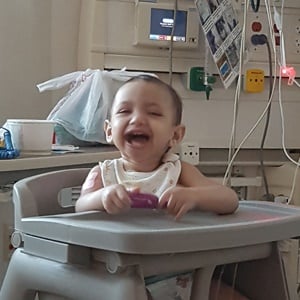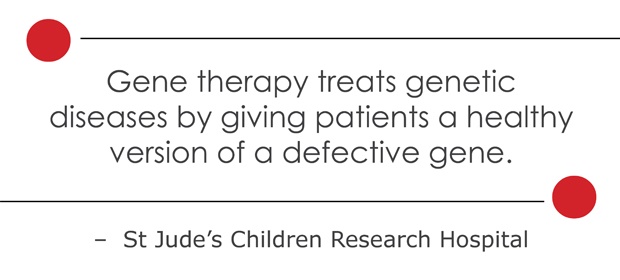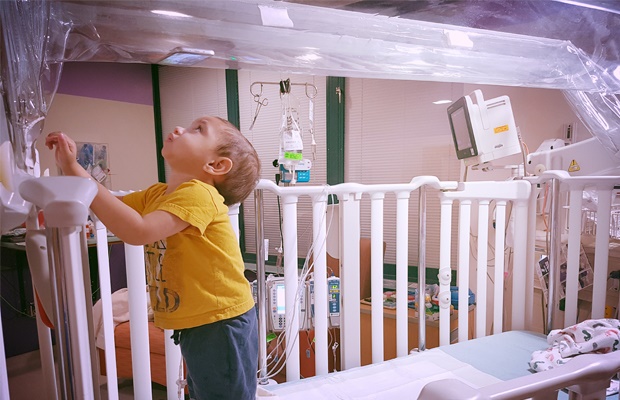
Ayaan Ahmed Isaacs was born on 4 March 2016. A few days later he suddenly became ill with violent crying fits, abnormal breathing, lethargy and poor latching. “This was certainly not mere newborn niggles,” says his mother, Shamaa Sheik.
On 18 March he was admitted to hospital after a blood test revealed signs of infection.
Over the next few weeks, Ayaan would undergo a number of surgeries: two were to remove 40 abscesses from his liver; later a port was placed in his chest to make blood draws less traumatic; and a further two to place a gastrostomy tube in his stomach to assist him with feeding.
Bubble Boy
While in hospital, Ayaan continuously presented with infections. His paedatrician ran more tests and by April 2016 he was diagnosed with Severe Combined Immunodeficiency (SCID). SCID is a genetic disorder of the immune system and is the most severe type of primary immune deficiency diseases affecting about 1 in 58 000 births.

According to a previous Health24 article, primary immunodeficiencies are disorders that occur because part of the body's immune system does not function properly.
This means that a common cold can be life threatening to someone with SCID – and most children don’t survive longer than a year.
“We were told that the only known cure was a successful blood stem cell transplant from a matched sibling or an unrelated donor,” says Sheik.
The search for a solution
“Once he was diagnosed with SCID we needed to determine his tissue type to find a possible donor. After three failed attempts at tissue typing Ayaan locally, we met with a transplant team to discuss our options. Without a tissue type, we couldn’t proceed further towards a transplant,” says Sheik. At this meeting she asked about gene therapy because the transplant process came with many risks. “Gene therapy was showing great promise the UK, France, Italy and America for children battling immune deficiencies and who lacked a matched donor.”

She says, “We were immediately told not to pursue the idea as the therapy was experimental and led to leukaemia. Instead we were advised to have Ayaan’s tissue typing done at a laboratory in the Netherlands, a test we had to pay for in dollars.”
After an agonising five-month wait, they finally received a tissue type and could start a preliminary search for a donor. “We remained hopeful that a match would be found despite the odds which are about 1 in 100 000. As ethnicity plays a huge role in finding a donor, the statistics and probability of finding a fully matched donor looked even more bleak.”
In November 2016 they received confirmation from the South African Bone Marrow Registry that the results of the donor search had been released to their haematologist.
“The results were only discussed with us in February 2017!” Sheik says. “There was no donor and our alternatives were either to do a half matched transplant using a parent or to go with an umbilical cord blood transplant which yielded a five out of six match on low-resolution testing.” She explains that the danger of accepting a low-resolution result without high resolution testing meant it was likely that more mismatches could be revealed, ultimately resulting in serious complications at transplant.
“The haematologist said he would find out whether a cord could be defrosted to extract DNA to perform high resolution testing.”
Gene therapy
They were desperate to find an alternative. “With the constant delays we experienced, I felt like I needed to do something,” she says.
“All the articles I read about SCID spoke about treatment only being effective if a child was transplanted within the first three months. Eleven months had gone by and still there was no sense of urgency from the specialists. They weren’t responsive to our requests for information.”
By November 2016, research led her to the St Jude Children’s Research Hospital in Memphis, Tennessee. “I made contact with a doctor at the hospital who was heading up a clinical trial. It was refreshing to receive an empathetic response minutes after my initial enquiry. By the end of March 2017, we arrived in Memphis ready to begin treatment. It only took three months to get here as opposed to our 11 month wait back home with no progress. Ayaan received his new cells on Freedom Day [27 April].”
They were warned that treatment overseas could run into bills of millions of dollars and even then the treatment may not work, but that didn’t deter Sheik.
“I found copies of journal articles that published the results of previous clinical trials from 1990 to date. There was no evidence of any South African nor African child being treated for X-linked SCID, so getting an opinion locally was not possible,” says Sheik.
“I also joined a support group on Facebook for families who have children with SCID together with a special SCID mailing group in order to gather more information.
These families were from America mainly; the rest were from Canada, Hawaii, Australia and the UK. “The nationalities joining these groups increase monthly as newborn screening for SCID becomes more prevalent worldwide.”
Sheik posted questions to families who had undergone gene therapy to find out what their experiences had been. “I was satisfied with the many positive responses I received.”
The journey is far from over
“We’re so proud to hold his hand through this historic process. I truly hope that his story inspires hope in others to remind them that miracles happen every day,” she says.

“No child should have to die just because they are unable to find a donor. Gene therapy offered Ayaan a chance at life that he ordinarily would not have had. I was fortunate to have found an alternative therapy that is working and already showing remarkable results.”
She continues, “We are mindful that this is still an experimental treatment and there are complications that can arise; however, I am very optimistic that he will return to South Africa with a functioning immune system.”
According to Sheik, Ayaan is the first child in Africa to receive gene therapy for X-linked SCID using the new technology developed by St Jude.
You can follow young Ayaan’s journey on Facebook.
Health24 is following up with St Jude’s to verify this information and to report on the gene therapy treatment.
Image credits: Supplied




 Publications
Publications
 Partners
Partners











